FISHECOLOGICAL
MONITORING
The
Institute of Hydrobiology and Aquatic Ecosystem Management,
Department of Water, Atmosphere and Environment of the
University of Natural Resources and Applied Life Sciences,
Vienna investigates the fishecological developement of the new
fishway and the new situation at the mouth of the Ybbs. The monitoring includes three topics:
-
Investigation of
functionality of the fishway
-
Fishecological
situation before and after the river restoration work at
the mouth of the Ybbs
-
Migrationstudy by
Telemetry
(= investigation of fishmigration by radio transmitters)
Fishecological
investigations of the Austrian Danube show a spectrum of 72
fish species. Out of these 57 are autochtoneous, 15 species non
native. It is possible that all 72 species can occour during the
monitoring investigations.
Short
Info of Monitoring confluence Zone of River Ybbs
The new mouth of the Ybbs shows good habitat
conditions for fish species, especially for juvenile fish. Today
the fishecologists find 20 fish species (before the restoration
work 13 species). A special benefit is proved for rheophilic
species like Nase (Chondrostoma nasus) an Barbel (Barbus barbus).
The confluence zone is habitat for 8 FFH- Annex II species:
Huchen (Hucho hucho), Schrätzer (Gymnocephalus
schraetzer), Streber (Zingel streber), Zingel (Zingel
zingel) und Strömer (Leuciscus souffia agassizi),
Schied (Aspius aspius), Frauennerfling (Rutilus
pigus virgo) und Koppe (Cottus gobio).
Detailed
Info in German Language >
Short
Info of
Monitoring fishway at the Melk Power Plant on the Danube
From the beginning of the investigations in march 2007 till today
40 fish species migrated into the new construction. Fish of all
lengths and year classes are present. In the fish spectrum there
are 6 FFH- Annex II species:
Schrätzer (Gymnocephalus
schraetzer), Zingel (Zingel
zingel),
Schied (Aspius aspius), Frauennerfling (Rutilus
pigus virgo) Weißflossengründling (Gobio albipinnatus)
und Koppe (Cottus gobio)
In
the first year the focus of the investigations layed on fish
traps. The traps were situated inside the migration facility about
200m from the upper and the lower end. From March till July 2007
3.529 fish out of 39 fish species were trapped and again released.
At the 18th of Juli 2007 electro- fishing shows thousands of
fish at the upper and lower end of the migration facility.
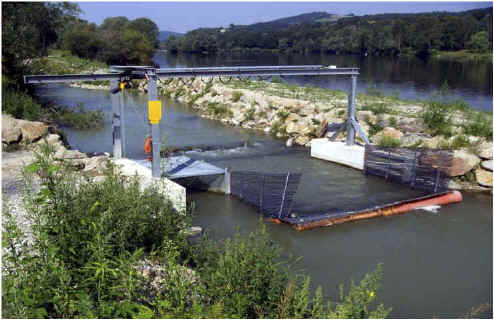
In
2008 some problems with the trapping occurs because of defects in
electric equippement and huge drift of algae. Because of this
situation the team layed the focus on electro fishing. A new run
of electro- fishing took place at the 2nd of Juli 2008 in 4
stretches of the migration facility after removing of the fish
traps one month ago. The fish density reached 268 fish/100 m in
mean. Adult individuals of Chondrostoma nasus and Barbus barbus
were in the migration facility. Calculating the catch up to 2
Kilometers length of the migration facility shows that there must
be a fish stock of some thousand individuals which migrate into
the construction within only one month.
The
team is now working on a design for the monitoring of the year
2009.
Detailed
Info in German Language >
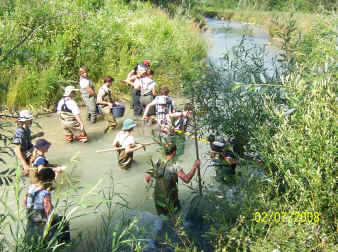 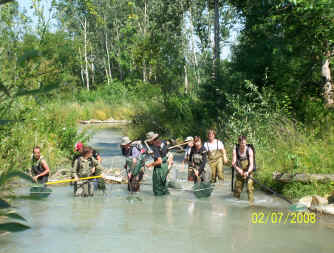
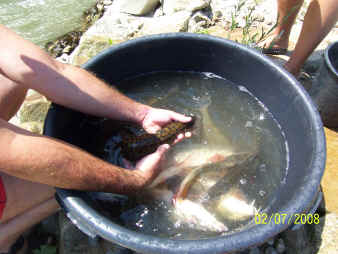 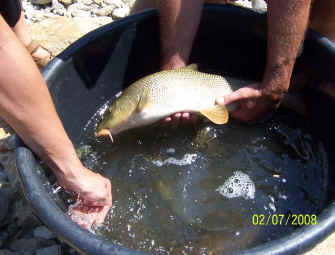
|